Medical history/diagnosis
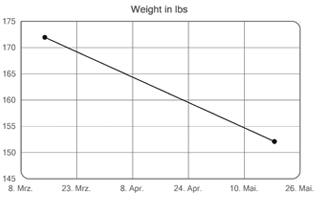
A 59-year old Caucasian male suffering from bronchial carcinoma shows the following development of weight after tumor removal by "lobectomy":
- March 14, 2012: 171.96 lbs
- May 18, 2012: 152.12 lbs
Thus, a clinically relevant weight loss is indicated.
Graphs of measuring results
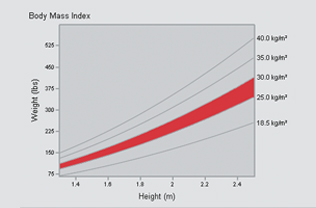
Body Mass Index (BMI)
The BMI and the fat mass are slightly increased but not remarkable.
- Height: 5.45 ft
- Weight: 152.12 lbs
- BMI: 25.00 kg/m2
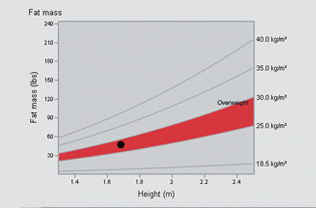
Fat mass
The increased fat percentage can be explained by the missing physical activity which the patients states.
- Fat mass (FM): 45.2 lbs
- Fat percentage (FM %): 30.00 %
- Fat mass index (FMI): 7.40 kg/m2
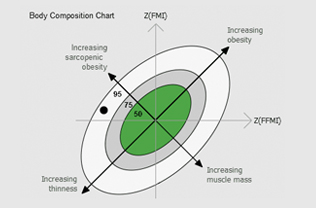
Body composition chart (BCC)
The BCC, however, indicates the assumed decreased muscle mass (weight loss, tumor and missing physical activity).
- Fat Free Mass Index (FFMI): 17.70 kg/m2
- Fat Mass Index (FMI): 7.50 kg/m2
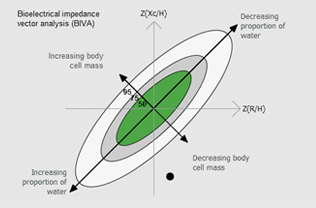
Bioelectrical impedance vector analysis (BIVA)
The subject stands out in the BIVA graph due to his measuring point beyond the 95th tolerance ellipse which indicates a low proportion of cells.
- Resistance R (50kHz): 536.9 Ω
- Reactance Xc (50kHz): 35.9 Ω
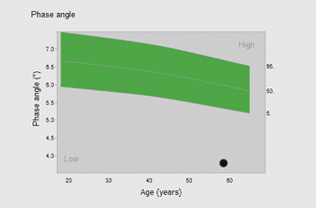
Phase angle
The phase angle value of 3.8° thus lies well below the normal values that apply for him.
- Phase angle φ: 3.8°
Summary
Due to the bad prognosis deriving from the phase angle, an early nutritional therapy and treatment of the tumor cachexia is required="required" (see Fearons International Cachexia Lancet Oncology). Although the BMI value seems normal, the weight loss can be clearly seen in his body composition: reduced muscle mass and cell mass. Due to the planned chemotherapy it is necessary to improve and closely monitor the nutritional state (see Andreyev, Ross) in order to offer the patient the best possible quality of life. Without having had access to a fast, clinically precise and differentiated body composition measurement this therapy recommendation would not have been possible.
Despite unremarkable BMI and fat mass values, the seca mBCA detected the cachectic state caused by the tumor disease and thus allows to define a nutritional therapy.
